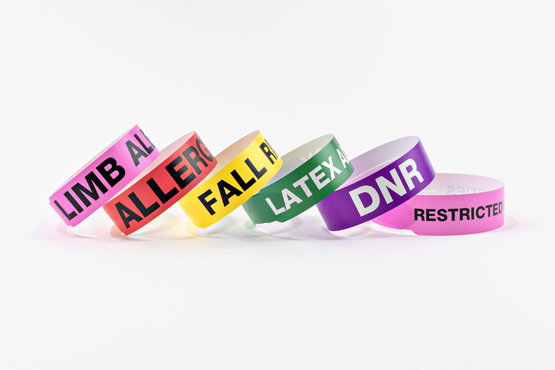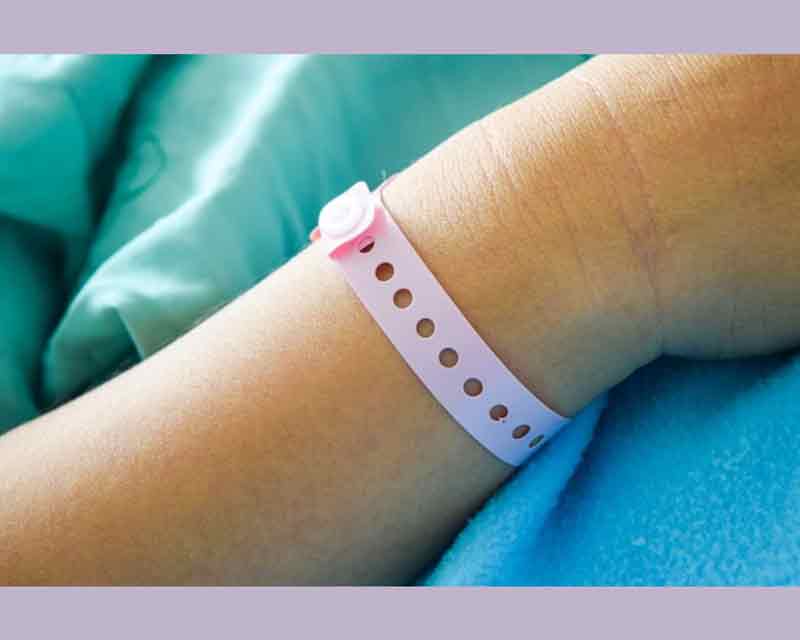The Impact of a Patient Identification Band in Improving Hospital Patient Tracking Systems
The Impact of a Patient Identification Band in Improving Hospital Patient Tracking Systems
Blog Article
The Crucial Uses Patient Identification Band for Making Sure Patient Safety And Security
In the world of health care, Patient security is a vital concern. One crucial device in attaining this is the Patient Identification band, a seemingly easy yet exceptionally substantial tool. It acts as a secure versus misidentification errors, promoting reliable communication amongst service providers, and improving the high quality of treatment. Its role in surgeries and pediatric care is notably vital. Nevertheless, the discussion doesn't stop below, as the evolving technological innovations in these bands offer more to check out.
Recognizing the Basics of Patient Identification Bands

The Role of Patient Identification Bands in Error Decrease
Given the critical importance of accurate Patient Identification in health care, the use of Patient Identification bands has actually verified to be extremely effective in reducing errors. These bands, often outfitted with barcodes or RFID chips, give instantaneous accessibility to a client's medical background, allergic reactions, and present treatments. In essence, Patient Identification bands serve as an important device in mistake reduction, enhancing Patient safety, and promoting top quality treatment in health care setups.

Enhancing Accuracy of Medical Diagnosis and Therapy With Identification Bands
The application of Patient Identification bands considerably boosts the precision of medical diagnosis and therapy. These bands play a vital function in decreasing clinical mistakes, as they give specific Patient details to healthcare professionals. Making sure right medical diagnosis and boosting therapy accuracy hence come to be possible objectives with these Identification devices.
Lowering Clinical Mistakes
A considerable variety of medical errors, typically causing fatal consequences, can be credited to misidentification of clients in healthcare setups. These mistakes consist of inaccurate diagnosis, improper drug management, and improper treatments. Patient Identification bands play a crucial function in reducing such dangers. By providing instant and accurate Identification, these bands make sure that doctor have the correct Patient info at their fingertips. They link people to their clinical records, ensuring precise data for medical diagnosis and therapy. Additionally, they protect against mix-ups in situations of clients with comparable names or appearances. Thus, the use of Patient Identification bands considerably decreases misidentification, boosting the accuracy of medical diagnosis and treatment, and consequently reducing the incidence of medical mistakes.
Improving Treatment Accuracy
Patient Identification bands, as pointed out previously, significantly curb clinical mistakes by ensuring appropriate Patient Identification. This, in turn, pushes renovation in therapy precision. These bands, including crucial details like the Patient's name, date of birth, and distinct Identification number, are important in matching the Patient to the proper medical diagnosis, case history, and treatment plan. This gets rid of the danger of complication or mix-ups, specifically in high-volume clinical setups where multiple patients could share similar names or signs. As a result, health care carriers can administer accurately targeted treatments, minimizing misdiagnoses or incorrect medication. Thus, Patient Identification bands work as read a keystone for individualized and specific therapy, boosting not just patient security however also their confidence in the medical care system.
Ensuring Correct Diagnosis
Almost every medical care specialist relies upon Patient Identification bands to enhance the accuracy of diagnosis and therapy. These basic, yet reliable devices supply a systematic strategy to Patient Identification, minimizing the chance of errors and misdiagnosis. Identification bands provide instantaneous access to crucial Patient details, including case history, allergic reactions, and current drugs, which are essential for precise medical diagnosis. By cross-referencing the data on the band with the Patient's digital health records, medical professionals can validate the Patient's identity, making certain the appropriate diagnosis. They help with Patient monitoring throughout the health center, allowing the seamless sychronisation of analysis tests and treatments. These bands, therefore, play a pivotal role in promoting Patient security and supplying high-quality treatment.
Impact of Patient Identification Bands on Surgical Safety
In spite of their seeming simplicity, Identification bands play a vital duty in guarding individuals throughout medical procedures. These bands act as the key source of Patient details, making sure accurate Identification and preventing medical errors, such as wrong-site, wrong-procedure, and wrong-patient surgical procedures. Each band includes important data, including the Patient's name, date of birth, and clinical document number, which medical team can cross-check with the medical schedule and Patient's graph. This verification pop over to these guys procedure reduces the danger of miscommunication or complication, especially in high-stress setups like the operating room. The persistent usage of Patient Identification bands dramatically adds to surgical security, boosting the overall top quality of medical care and Patient depend on in clinical organizations.

The Usage of Identification Bands in Pediatric Care
The usage of Identification bands in pediatric care is of critical value (patient identification band). Their duty in stopping pediatric Identification mistakes is vital for guaranteeing Patient security. In addition, these bands can substantially improve the efficiency of pediatric treatment by enhancing Patient processes
Avoiding Pediatric Identification Mistakes
While Patient Identification errors are a problem in all areas of health care, they are specifically alarming in pediatric care as a result of the distinct vulnerabilities of this Patient population. Pediatric individuals typically can not interact effectively, making Identification tough. The use of Patient Identification bands plays an important role in alleviating these dangers. Wrong Patient Identification can result in major clinical errors, consisting of incorrect medicine giving and incorrect operations. By utilizing Identification bands, healthcare providers can considerably reduce these mistakes, enhancing Patient safety and security. These bands, birthing necessary Patient details, act as a prompt referral for treatment suppliers, ensuring the ideal care is provided to the right Patient. Hence, Identification bands are a vital tool in preventing pediatric Identification errors.
Enhancing Pediatric Care Performance
By making certain accurate Patient Identification, these bands lessen mistakes, conserving time for clinical experts. The info consisted of in the band, such as an individual's name, age, and medical background, makes it possible for swift and precise medical diagnosis and therapy. This is especially vital in pediatric settings where clients might not be able to connect properly.
Technological Improvements in Patient Identification Bands for Improved Safety
As healthcare systems constantly develop, the value of Patient Identification bands has progressively attracted interest from clinical experts worldwide. Technical innovations have actually boosted the functionalities of these bands, transforming them into vital tools for Patient security - patient identification band. They additionally facilitate effective Patient tracking, making sure Patient safety and security and boosting the total high quality of healthcare solutions.
Final thought
Patient Identification bands play an essential duty in health care, guaranteeing Patient security and accuracy in diagnosis and therapy. They stay an essential device in the pursuit for boosted Patient safety and security and quality treatment shipment.
Offered the crucial importance of exact Patient Identification in health care, the usage of Patient Identification bands has proven to be very effective in reducing errors. In significance, Patient Identification bands offer as a crucial like it tool in mistake decrease, enhancing Patient safety and security, and promoting quality care in healthcare setups.Patient Identification bands, as stated previously, dramatically suppress clinical errors by guaranteeing correct Patient Identification. These bands, containing essential information like the Patient's name, day of birth, and special Identification number, are critical in matching the Patient to the suitable diagnosis, medical history, and therapy plan. The thorough usage of Patient Identification bands dramatically adds to medical security, enhancing the general high quality of health care and Patient depend on in clinical establishments.
Report this page